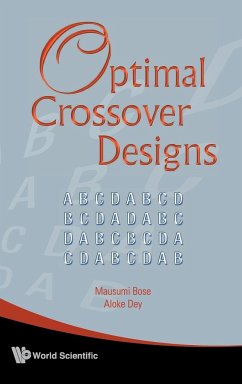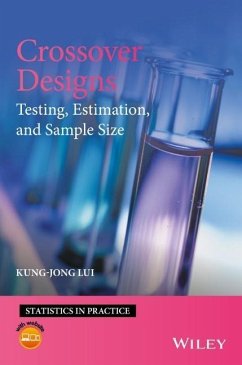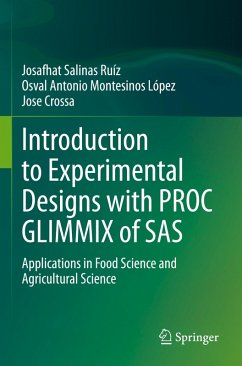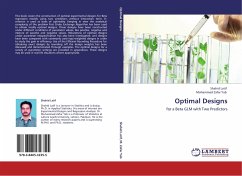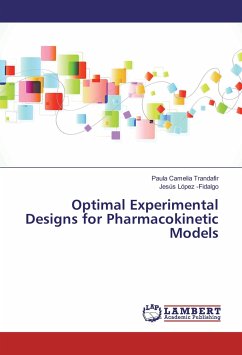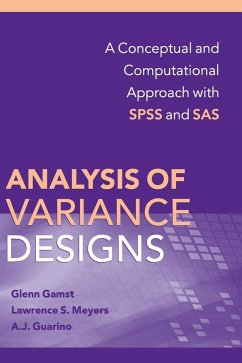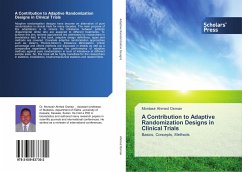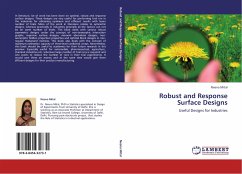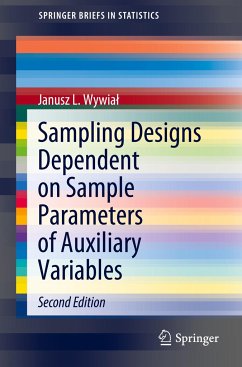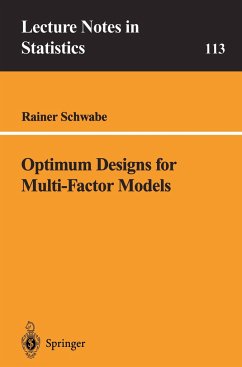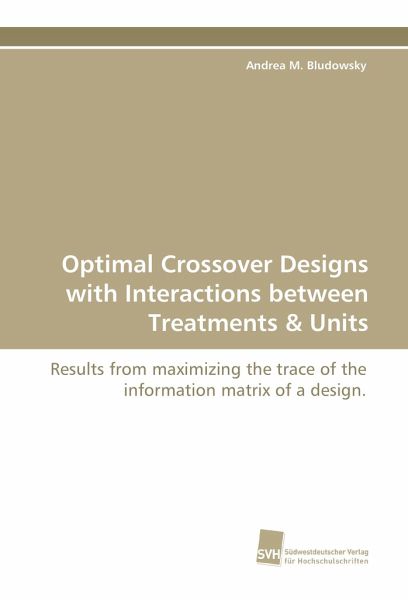
Optimal Crossover Designs with Interactions between Treatments & Units
Results from maximizing the trace of the information matrix of a design.
Versandkostenfrei!
Versandfertig in 6-10 Tagen
46,99 €
inkl. MwSt.

PAYBACK Punkte
23 °P sammeln!
Many papers deal with the most common model for crossover designs, which typically include period, unit, direct treatment, and carryover effects. However, some authors argue the common model to be too simple in its assumptions and suggest that unit by treatment interaction may be of additional importance. Therefore, the interest of this doctoral thesis is to find optimal crossover designs in an unconstrained model with random assessor effects. The observations are assumed to be influenced by carryover effects and additional interactions between treatments and units. Kushner's method is applied...
Many papers deal with the most common model for crossover designs, which typically include period, unit, direct treatment, and carryover effects. However, some authors argue the common model to be too simple in its assumptions and suggest that unit by treatment interaction may be of additional importance. Therefore, the interest of this doctoral thesis is to find optimal crossover designs in an unconstrained model with random assessor effects. The observations are assumed to be influenced by carryover effects and additional interactions between treatments and units. Kushner's method is applied in order to evaluate how interaction and carryover effects operate conjointly in an optimal crossover design. The method by Kushner maximizes the trace of the information matrix of the design on the basis of design-dependent equivalence class functions. There are three equivalence classes of treatment sequences, which are crucial for the generation of an approximated optimal design if the number of periods does not exceed six.



